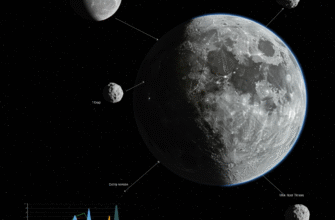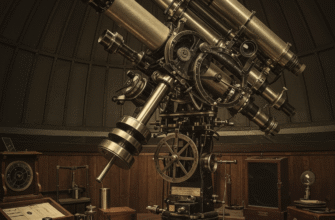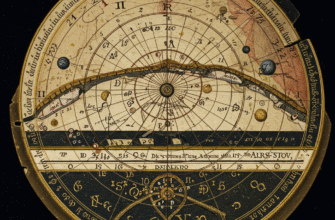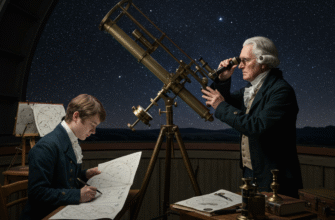Across the tapestry of human cultures, a profound connection with the natural world has always been a cornerstone of existence. This bond often manifests in the concept of totemism, where specific animals, plants, or natural phenomena become symbols of kinship, identity, and spiritual guidance for a group, clan, or individual. Among these, celestial animals – creatures perceived to inhabit or represent the sun, moon, stars, and other sky-bound entities – hold a particularly potent place in the cosmologies of indigenous peoples worldwide. Their stories are woven into the fabric of the night sky and the daily passage of the sun, acting as living maps of belief and belonging.
Understanding the Totemic Bond
A totem is far more than just a mascot. For many indigenous cultures, it represents a direct ancestral link, a spiritual guardian, or even a physical manifestation of a founding ancestor. The relationship with a totem animal is deeply reciprocal; the clan or lineage honors and respects the totem, and in turn, the totem provides protection, wisdom, and a sense of shared identity. These connections often come with specific responsibilities, such as taboos against harming or consuming the totem animal, and rituals designed to maintain a harmonious relationship with its spirit. The choice of a totem is rarely arbitrary; it often stems from significant encounters, dreams, visions, or ancestral narratives that highlight the animal’s unique qualities and its connection to the group’s origins or destiny.
The Sky’s Embrace: Why Celestial Animals?
The heavens have always captivated human imagination. The sun, moon, and stars are powerful, ever-present forces, dictating seasons, guiding navigators, and inspiring awe. It is natural, then, that animals seen to interact with or symbolize these celestial bodies would be imbued with immense spiritual significance. Birds that soar to great heights, like eagles and condors, are often seen as messengers to the sky gods or spirits of the sun. Nocturnal hunters, such as owls or jaguars, become associated with the moon and the mysteries of the night sky. Constellations themselves are frequently interpreted as giant celestial animals, their stories playing out eternally above, mirroring and influencing life below. These creatures bridge the gap between the earthly and the divine, embodying the power and mystery of the cosmos.
Global Echoes of Celestial Kinship
The reverence for celestial animals as totems is not confined to one region but echoes across continents, demonstrating a shared human impulse to find meaning in the skies.
North American Narratives
Many Native American tribes hold the Eagle in highest esteem. Often seen as a messenger to the Creator, its ability to fly higher than any other bird connects it directly to the sun and the heavens. Eagle feathers are sacred, used in ceremonies to carry prayers. The Thunderbird, a mythical creature, embodies the power of storms and is a prominent sky being. Similarly, the Bear, often linked to constellations like Ursa Major (the Great Bear), is a powerful totem representing strength, introspection, and healing. Its hibernation cycle is sometimes seen as a journey to the spirit world. The Raven, particularly in Pacific Northwest cultures, is a complex figure – a creator, a trickster, and a bringer of light, often described as stealing the sun or stars to give to humankind, deeply entwined with celestial events.
South American Sky Lords
In the Amazon and Andes, the Jaguar reigns as a powerful totem. Its spotted coat is sometimes said to represent the stars, and its nocturnal habits link it to the moon and the spirit world. Shamans often seek to embody the jaguar’s power to navigate different realms. The Condor, soaring over the Andean peaks, is another significant celestial totem, viewed as a messenger of the gods, connecting the earthly realm (Kay Pacha) with the upper world (Hanan Pacha) in Incan cosmology. Its presence signifies a connection to the sacred mountain spirits and the sun.
Australian Dreamtime Skies
Aboriginal Australian cultures possess an incredibly rich astronomical tradition. The Emu in the Sky is a famous example, a dark constellation formed by the dust lanes in the Milky Way, rather than by stars. Its appearance signifies seasonal events and informs Law. The Rainbow Serpent, a powerful creator being, is associated with water, rain, and the sky, sometimes arching across it like a rainbow, linking heaven and earth. Many Dreamtime stories feature animals transforming into stars or celestial bodies, becoming eternal guides and reminders of ancestral law.
African Celestial Connections
Across the diverse cultures of Africa, celestial symbolism is rich. While clan totemism varies, animals associated with the sky often hold significant power. The Leopard, with its star-like spots, is a symbol of royalty and power in many cultures, its stealth and nocturnal nature linking it to the mysteries of the night. Certain birds, like the Bateleur eagle, are seen as messengers or possess prophetic abilities due to their connection with the heavens. The San people of Southern Africa have intricate stories about the stars, many involving animals and early humans who ascended to the sky.
Eurasian Sky Beings
In Siberian shamanism, the Eagle is a primordial shaman, a messenger between worlds, and often a significant clan protector. The Bear is also profoundly sacred, often viewed as an ancestor and featuring in celestial hunt myths. Among the Ainu people of Japan, the bear (Kim-un Kamuy) is a mountain god who visits the human world. Mongolian traditions revere the wolf as a celestial ancestor, and Tengrism, the ancient sky god religion, naturally places importance on beings perceived to traverse or embody the sky.
The Enduring Roles of Sky Totems
Celestial animal totems serve multifaceted roles within indigenous societies. They are foundational to identity and kinship, delineating clans and lineages, and reminding members of their shared ancestry and responsibilities. They provide spiritual guidance and protection, with the totem animal acting as a guardian spirit, offering wisdom, strength, or specific skills to its human relatives. These totems are integral to cosmology and storytelling; myths about celestial animals explain the creation of the universe, the changing of seasons, the movement of stars, and the moral codes by which people should live. Rituals and ceremonies are often centered around honoring these totems, ensuring the continuation of the spiritual connection and maintaining balance within the community and with the natural world. Furthermore, totemic relationships often dictate social rules and taboos, such as prohibitions on hunting or eating the totem animal, reinforcing respect and ecological awareness.
The practice of identifying kin groups with specific animals, including those with celestial connotations, is a remarkably widespread phenomenon in human societies. Anthropological studies confirm that such totemic systems exist on every inhabited continent. These systems are not mere superstitions but complex social and cosmological frameworks that structure relationships between humans, animals, and the environment, often deeply intertwined with astronomical observations.
The Heavens as a Storybook
For many indigenous cultures, the night sky is not a random scattering of lights but a vast, living storybook. Constellations are often seen as giant animals or human figures playing out eternal dramas. The Orion constellation, for example, is interpreted in vastly different ways by different cultures, but often involves hunters and animals. The Pleiades star cluster, too, carries diverse animal-related myths globally. The movements of the sun, moon, and planets, often personified or associated with specific animals, were keenly observed, forming the basis of calendars, agricultural cycles, and navigational techniques. These celestial animals were not just symbols; they were active participants in the cosmic order, their stories providing vital knowledge for survival and spiritual understanding.
A Legacy Woven in Starlight
Despite centuries of colonization, displacement, and cultural suppression, the reverence for celestial animal totems endures in many indigenous communities. These beliefs are not relics of a forgotten past but living traditions that continue to inform identity, spirituality, and a profound connection to the natural world. Efforts to revitalize indigenous languages and cultural practices often include the sharing of these ancient stories and the wisdom they contain. The enduring power of celestial animal totems lies in their ability to connect people to their heritage, to the land, and to the vast, mysterious universe that has captivated human hearts and minds since time immemorial. Recognizing and respecting these traditions is crucial for understanding the diverse ways humanity has sought to make sense of its place in the cosmos.








